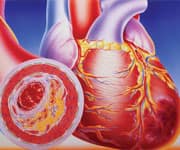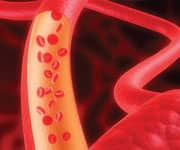Life Extension Magazine®
Wrinkles, loss of skin elasticity, and collagen destruction are the first visible signs of aging. More than skin deep, these degradations also are reflective of our internal aging as well. By slowing the factors that cause skin aging, we can also slow total body aging. That's because the same basic mechanisms are at work to age us on the outside as well as the inside: oxidant stress, inflammation, damage to DNA, glycation, and cell membrane damage. Extensive research into a plant extract Pycnogenol® from the French Maritime pine tree has shown that this collection of phyto-molecules not only rejuvenates skin elasticity and reduces collagen degradation, but works internally to lower blood glucose levels, increase nitric oxide to dilate blood vessels, restore capillary health, and normalize blood pressure. And it does all this by attacking the same fundamental aging mechanisms. Pycnogenol® is a natural plant extract that contains procyanidins, bioflavonoids, and other health-giving molecules that act synergistically on five of the major processes that cause your skin—and your entire body—to age too quickly.1-3 Pycnogenol® Fights Aging MechanismsResearchers have identified several fundamental mechanisms that cause the diseases related to aging. Many scientists now believe that these mechanisms are involved in aging itself, and that the "diseases of aging" are merely symptoms of this process. Basic laboratory studies reveal that Pycnogenol® directly and indirectly shuts down at least five of the key mechanisms of aging that include:
With the wealth of published data on the broad spectrum health benefits of Pycnogenol®, scientists began digging deeper into the impact that this extract has on the numerous factors of aging. In order to better understand the various benefits of Pycnogenol® researchers created a study using accelerated aging mice,7 which grow old much faster than normal animals. These specially bred mice show the typical effects of aging, such as decreased immune function, poor blood cell production, and learning and memory deficits. When researchers fed a group of age-accelerated mice a diet supplemented with Pycnogenol®, the mice demonstrated significant improvements in cellular function, particularly their immune system's infection- and tumor-fighting cells.7 These hallmarks of a strong immune system are also the hallmarks of optimal health. The animals also showed increased production of blood cells from their bone marrow, becoming more like normal younger animals.7 The researchers concluded that Pycnogenol®, a unique natural mixture of health-promoting substances, was able to rejuvenate the experimental animals' biology in ways that no single drug, or even nutrient, could do. Pycnogenol® synergistically restored many of the important defense factors that help us fight off various diseases when we are young, but that deteriorate with age. Armed with this insight, scientists began to explore other ways that Pycnogenol® fights the primary aging mechanisms and slows the aging process in many different organs and systems at once. Beauty from Within: Pycnogenol® Rejuvenates SkinLet's first examine Pycnogenol's® impact on preserving and restoring skin health and vitality before we turn to its internal health benefits. Skin ages for many reasons; leading to the visible signs we associate with older people. Numerous studies have shown that Pycnogenol® can reduce many of the aging factors that destroy supple skin by reducing free radical damage and protecting collagen and elastin from enzymatic degradation. To many scientists' surprise, Pycnogenol® can block UV light's damaging effects thereby preventing the inflammation and protein loss that ultimately leads to wrinkling.8-10
In one study, researchers showed that Pycnogenol® supplementation (75 to 125 mg/day) protected human volunteers from damaging sunburn after exposure to UV light.9 In other words, Pycnogenol® acts as an internal sun-screen, reducing your exposure to this major cause of wrinkles. Pycnogenol® further prevents wrinkling by protecting vital skin proteins from degradation, while increasing their natural production.11-13 These proteins break down by UV-induced inflammatory processes caused by sun exposure. Healthy protein levels give youthful skin its supple, taut, elastic quality; their loss is a major contributor to wrinkling. In animal studies, mice supplemented with a mixture containing Pycnogenol® had significantly fewer wrinkles after exposure to UV light.13 They also had reduced UV-induced skin thickening and toughening, problems that also age human skin. In a key human study, 62 women ages 45-73 took part in a double-blind, placebo-controlled trial of a similar Pycnogenol®-containing oral mixture. Skin elasticity improved by an impressive 9% after 6 weeks of treatment, compared to the placebo group.14 By 12 weeks of supplementation, skin roughness was also significantly reduced by 6%.14 Another study in 2012 showed that Pycnogenol® alone, at a dose of 75 mg/day, increased skin hydration by 8% after just 6 weeks; in women with dry skin at baseline the increase was 21%.11 Skin elasticity increased, and skin fatigue decreased significantly in this study as well, further lowering the wrinkling risk.
Pycnogenol® also has favorable effects on the uneven and undesirable pigmentation of skin known as melasma which is typically seen on facial areas with high sun exposure. In a study, 30 women with melasma took 75 mg/day of Pycnogenol® for 30 days.15 At the end of the study, the size of their unwanted skin pigmentation was significantly reduced. Other areas of skin became lighter as well, as the density of pigment decreased. Chronic venous insufficiency, unlike wrinkling and melasma, is often part of a life-threatening process, such as congestive heart failure or a blood clot.16 The resulting skin breakdown and ulceration also opens victims up to the risk of serious infections. Two large clinical studies showed Pycnogenol's® benefits in fighting chronic venous insufficiency. In the first, patients took 150 or 300 mg/day for 8 weeks, in comparison with an established drug treatment called Daflon.17 Pycnogenol® supplemented patients had reduced leg swelling, along with improvements in oxygen and carbon dioxide content of the tissue.17 These changes all indicated improved blood flow and decreased capillary fluid leakage compared with the Daflon group. The second study compared Pycnogenol® 150 mg/day with a placebo, over an 8-week period. Supplemented patients had a 26% decrease in ankle swelling and a 64% reduction in tissue fluid (edema).16 That netted patients a 60% decrease in overall symptoms including pain, restless limbs, and skin alterations. Clearly Pycnogenol® battles aging skin both internally and externally. Let's look now at how it fights the effects of age in some other tissues and organs.
|
Pycnogenol® for Heart and Artery Health
More than 27 million Americans have heart disease; nearly 600,000 die from it each year.18 Age-related dysfunction of the endothelium (the layer of cells lining arteries and smaller vessels), is to blame for many cardiovascular diseases. A malfunctioning endothelium can't properly control blood flow and pressure. Excessive platelet function is another cause of heart disease and stroke. When platelets are overactive, clots form inside blood vessels, blocking blood flow. The result of endothelial dysfunction and platelet activation can be a heart attack or stroke. Pycnogenol® improves both conditions. Pycnogenol's® antioxidant function helps protect endothelial cells from damage.19 In addition, it may bind to proteins in blood vessel walls, helping to "seal" them and prevent capillary leakage.20 Studies demonstrate how these effects play out in human subjects with endothelial dysfunction. When patients with high blood pressure were given 100 mg/day of Pycnogenol® for 12 weeks, they were able to reduce their blood pressure medication.21 In another study, 125 mg Pycnogenol®/day helped normalize blood pressure in 58% of hypertensive diabetic patients, while cutting their need for blood pressure medication by 50%.6 Supplementation can also reduce the fluid accumulation that is a common side effect of blood pressure medications.22 Insight into how Pycnogenol® works to lower blood pressure comes from human studies using ultrasound to measure blood flow. Healthy young men treated with 180 mg/day of Pycnogenol® had a 41% increase in blood flow response to the vascular-response neurotransmitter acetyl choline indicating significantly lower risk for cardiovascular complications.23
A similar study done in patients with existing coronary artery disease, (who were considered at high risk for heart attacks) showed that 200 mg of Pycnogenol® per day along with standard cardiovascular therapy, produced a 32% increase in coronary blood flow, but no change occurred in placebo patients.24 Another benefit of improved blood flow is better erectile function in men. A dramatic study showed that a combination of L-arginine aspartate and Pycnogenol® intake for one month restored erectile dysfunction to normal, and doubled the frequency of intercourse.25 Along the way, cholesterol and blood pressure were also reduced. The physiology behind the improvement in erectile function is important, and applies equally to men and women. That's because nitric oxide, a signaling compound, is essential in dilating blood vessels, not only to allow a normal erection, but also to control blood pressure throughout the body. Our bodies relax their arteries by increasing nitric oxide levels in the vessels' lining cells, or endothelium.26 Pycnogenol® beneficially modulates nitric oxide production.27 In endothelial cells, Pycnogenol® boosts levels of endothelial nitric oxide synthase (eNOS), the enzyme system that produces vessel-relaxing nitric oxide in response to blood flow and blood pressure.28 That effect is powerful enough to overcome the vessel-constricting, blood pressure-elevating effects of adrenaline and other stress-induced compounds.28 The result is an increase in blood flow to vital tissues, and a decrease in blood pressure.27 Animal and human studies have repeatedly shown that treatment of hypertension with Pycnogenol® results in lowered blood pressure and reduced damage to blood vessels and organs such as the kidney.27,29 And the positive elevation of nitric oxide in endothelial tissue can also inhibit LDL cholesterol oxidation, slowing the early development of atherosclerotic plaques.28
Among the most exciting developments with Pycnogenol® and nitric oxide are studies showing that Pycnogenol® can mitigate the effects of congestive heart failure. In this condition, chronically elevated pressures within the heart cause the muscle to become floppy and ineffective. Victims become weak, fluid accumulates in their tissues, and death often results from increasingly insufficient blood flow. Changes in heart structure during congestive heart failure are the direct result of impaired nitric oxide production. Supplementing animals with Pycnogenol® reverses that remodeling in congestive heart failure, reduces the gradual degradation of heart muscle proteins, and restores the heart's ability to pump blood normally.30,31 Boosting nitric oxide in endothelial cells and platelets also gives Pycnogenol® impressive effects on platelet function. It reduces their “stickiness,” which lowers the risk that these tiny blood cells will produce a deadly clot in one of your vessels.28 Smokers, who are at high risk for blood clots, participated in a study that showed 200 mg of Pycnogenol® was sufficient to reduce over-activated platelet function.32 This effect is likely due to reduction in thromboxane, a clot-inducing protein that is elevated in many high-risk conditions including diabetes and obesity.33
When you sit still for long periods of time (for example, on a long airplane flight), you are at risk for developing dangerous blood clots in your legs. These clots can travel, eventually blocking major arteries from the heart to the lungs, and cause sudden death. Pycnogenol® shows a unique ability to prevent these so-called thrombotic events. When a group of 99 long-haul airline passengers were given 200 mg of Pycnogenol® before departure, and another 200 mg 6 hours later, then 100 mg next day, they had zero thrombotic events, compared with 5 such events in a similar-sized group of placebo patients.34 Pycnogenol® Helps Control Diabetes
People with diabetes are in a constant state of accelerated aging, vulnerable to all five of the key mechanisms described on the preceding page. Controlling blood sugar levels is vital to prevent these age-enhancing effects. Pycnogenol® supplementation lowers blood sugar levels, especially in the critical after-meal period when high sugar leads most powerfully to heart disease.35,36 One way Pycnogenol® works is by blocking starch breakdown in the intestine.37 This slows glucose absorption (we get much of our glucose from breaking down starch), and helps level off the blood sugar flux throughout the day. Pycnogenol® also stimulates cells to take up excess glucose from the blood, reducing blood sugar even more.38,39 Patients treated with 125 mg/day of Pycnogenol® saw a drop in fasting blood sugar of 23.7 mg/dL, compared with a decrease of just 5.7 in controls. Hemoglobin A1c, a marker of long-term blood sugar levels, dropped by 0.8% in supplemented patients, compared with just 0.1% in controls. LDL (bad) cholesterol dropped by 12.7 mg/dL as well.6 In a second study involving 30 individuals with type II diabetes who were not on conventional therapy, Pycnogenol® showed dose dependent lowering of blood sugar levels.35 The participants were administered 50 mg of Pycnogenol® for 3 weeks, followed by 100 mg for 3 weeks, and finally 200 mg for 3 additional weeks. As little as 50 mg per day of Pycnogenol® had significant blood sugar lowering effects not just on fasting blood sugar but post-meal blood sugar as well. However, the benefit of taking 100 mg or 200 mg of Pycnogenol® was even more dramatic. Many people with diabetes need to lose weight. Strict control of blood sugar and weight loss will reduce, but not eliminate, the risk of diabetic complications. Many of these complications result from small blood vessel damage in the eye, the skin, and the nerves. Pycnogenol® slows progression of blood vessel disease in the eye (diabetic retinopathy) by reducing capillary damage in the retina and improving blood flow.39-41
One study using 150 mg/day for 2 months completely blocked the loss of retinal function in diabetic patients.20 Placebo patients just got worse. Supplemented patients showed no deterioration of retinal function, instead experienced a significant recovery in visual acuity (ability to see according to the standard “Snellen” eye chart).20 Blood vessel studies in supplemented patients demonstrated improved distribution of blood vessels, and a reduction in the "leakiness" of capillaries that damages vision. An independent study at a different hospital showed similar results.41 Eighteen out of 24 patients had subjective improvement in their vision, and the average visual acuity on the Snellen chart improved by 21.4% after just 2 months of treatment. No change was found in the placebo group. Diabetic damage to capillaries in the skin (microangiopathy) produces skin breakdown and ulcers. Oral Pycnogenol® at 150 mg/day can produce complete healing of ulcers in up to 85% of patients.42,43 Prolonged exposure to elevated glucose damages nerves, producing a painful condition called diabetic neuropathy. People with this condition experience burning, stinging sensations; meanwhile, their nerves conduct impulses more slowly than normal. Pycnogenol® has been shown to slow declines in nerve conduction velocity, even under diabetic conditions.36 |
Pycnogenol® Boosts Brain and Memory Function
Our delicate brain tissue is especially vulnerable to the effects of aging. The brain receives 30% of overall blood flow, which is good, but which also exposes it to very high levels of oxidant stress. Over time, the other aging mechanisms also accumulate in the brain, eventually leading to loss of memory, slowed learning, and specific conditions like Alzheimer's disease. Pycnogenol® is especially good at protecting brain cells from oxidant and inflammatory damage in Alzheimer's disease.19,44 It slows cell death following exposure to the dangerous "Alzheimer's protein" called Abeta (amyloid beta), and other oxidant stressors.44,45 Studies show that Pycnogenol® not only blocks oxidant damage, but also increases levels of natural antioxidants in brain cells, further increasing their resilience.44,46 These biochemical effects produce real results in older adults. Three months' supplementation with Pycnogenol® 150 mg/day in healthy older adults produced significant improvements in working memory.47 That's the kind of memory you use, for example, when you look up a phone number and remember it long enough to dial it, or to find your way back to your room in a new house or hotel. Pycnogenol® also helps improve spatial memory in aged animals with low testosterone (a common finding in men after "male menopause").48 Spatial memory is what you use to remember where you put something, for example. Menopause in women also causes loss of memory and some other brain functions. Pycnogenol® decreased overall menopausal symptoms in women by 46%, compared with no change in placebo patients, with specific improvement in memory function, concentration, mood, and sleeping patterns.49 Even people at the other end of the age spectrum can benefit from Pycnogenol® supplementation for memory. Healthy students supplemented with Pycnogenol® experienced improved attention, memory, and mood ratings.50 Not only that, but they performed better on real tests. Control students failed 10.7% of their tests, while supplemented students failed only 6.25%; average test scores were 7.6% better in those on supplements.
Pycnogenol® Eases ArthritisStiff, aching joints are almost a stereotype of an aging person. Joints age for the same reason that other tissues do; they succumb to the 5 basic mechanisms of aging that we've been discussing. The most common consequence of aging in joints is osteoarthritis, suffered by fully one-third of people over age 65.51 Pycnogenol® offers dramatic relief for osteoarthritis sufferers, as demonstrated by a 3-month study of 156 people.52 Just 100 mg/day produced a 56% reduction in the global WOMAC score, (a standard arthritis self-assessment test that evaluates pain, stiffness, and functional limitation of arthritic joints), while placebo recipients' scores dropped only 9%. Before supplementation, patients could walk only about 223 feet; that distance increased 66% to 650 feet after treatment. Placebo recipients saw little change. In the same study, drug use dropped by 58% in supplemented patients, and just 1% in controls.52 Meanwhile, stomach complications (common in people taking high doses of arthritis drugs), dropped 63% (and only 3% in placebo patients). Similar studies have shown identical results for osteoarthritis,53 and also improvement in arthritis caused by gout.54 The benefits of Pycnogenol® on arthritic joints are likely the result of sharp reductions in inflammatory markers in the blood, which signal diminished damage in joints.54,55 SummaryAging is accelerated by multiple pathological events. It is most evident in the skin, our largest and most visible organ. But the same processes take place throughout the body. Pycnogenol®, a natural mixture of health-promoting phyto-molecules, dramatically improves skin aging, reducing the risk of wrinkles, abnormal pigmentation, and even the thinning and ulceration that accompanies vascular insufficiency. Studies show that Pycnogenol® synergistically attacks five of the most prominent causes of aging in skin and in many other organs and systems. The multiple anti-aging mechanisms of Pycnogenol® would be expected to substantively reduce risk for cardiovascular disease, diabetes, cognitive decline, and arthritis. If you have any questions on the scientific content of this article, please call a Life Extension® Health Advisor at 1-866-864-3027. |
References1. Packer L, Rimbach G, Virgili F. Antioxidant activity and biologic properties of a procyanidin-rich extract from pine (Pinus maritima) bark, Pycnogenol®. Free Radic Biol Med. 1999 Sep;27(5-6):704-24. 2. Rohdewald P. A review of the French maritime pine bark extract (Pycnogenol®), a herbal medication with a diverse clinical pharmacology. Int J Clin Pharmacol Ther. 2002 Apr;40(4):158-68. 3. D’Andrea G. Pycnogenol®: a blend of procyanidins with multifaceted therapeutic applications? Fitoterapia. 2010 Oct;81(7):724-36. 4. Sivonova M, Waczulikova I, Kilanczyk E, et al. The effect of Pycnogenol® on the erythrocyte membrane fluidity. Gen Physiol Biophys. 2004 Mar;23(1):39-51. 5. Krizková L, Chovanová Z, Duracková Z, Krajcovic J. Antimutagenic in vitro activity of plant polyphenols: Pycnogenol® and Ginkgo biloba extract (EGb 761). Phytother Res. 2008 Mar;22(3):384-8. 6. Zibadi S, Rohdewald PJ, Park D, Watson RR. Reduction of cardiovascular risk factors in subjects with type 2 diabetes by Pycnogenol® supplementation. Nutr Res. 2008 May;28(5):315-20. 7. Liu FJ, Zhang YX, Lau BH. Pycnogenol® enhances immune and haemopoietic functions in senescence-accelerated mice. Cell Mol Life Sci. 1998 Oct; 54(10):1168-72. 8. Sime S, Reeve VE. Protection from inflammation, immunosuppression and carcinogenesis induced by UV radiation in mice by topical Pycnogenol®. Photochem Photobiol. 2004 Feb;79(2):193-8. 9. Saliou C, Rimbach G, Moini H, et al. Solar ultraviolet-induced erythema in human skin and nuclear factor-kappa-B-dependent gene expression in keratinocytes are modulated by a French maritime pine bark extract. Free Radic Biol Med. 2001 Jan 15;30(2):154-60. 10. Rona C, Vailati F, Berardesca E. The cosmetic treatment of wrinkles. J Cosmet Dermatol. 2004 Jan;3(1):26-34. 11. Marini A, Grether-Beck S, Jaenicke T, et al. Pycnogenol® effects on skin elasticity and hydration coincide with increased gene expressions of collagen type I and hyaluronic acid synthase in women. Skin Pharmacol Physiol. 2012;25(2):86-92. 12. Tixier JM, Godeau G, Robert AM, Hornebeck W. Evidence by in vivo and in vitro studies that binding of Pycnogenol® to elastin affects its rate of degradation by elastases. Biochem Pharmacol. 1984 Dec 15;33(24):3933-9. 13. Cho HS, Lee MH, Lee JW, et al. Anti-wrinkling effects of the mixture of vitamin C, vitamin E, Pycnogenol® and evening primrose oil, and molecular mechanisms on hairless mouse skin caused by chronic ultraviolet B irradiation. Photodermatol Photoimmunol Photomed. 2007 Oct;23(5):155-62. 14. Segger D, Schonlau F. Supplementation with Evelle improves skin smoothness and elasticity in a double-blind, placebo-controlled study with 62 women. J Dermatolog Treat. 2004 Jul;15(4):222-6. 15. Ni Z, Mu Y, Gulati O. Treatment of melasma with Pycnogenol®. Phytother Res. 2002 Sep;16(6):567-71. 16. Cesarone MR, Belcaro G, Rohdewald P, et al. Rapid relief of signs/symptoms in chronic venous microangiopathy with Pycnogenol®: a prospective, controlled study. Angiology. 2006 Oct-Nov;57(5):569-76. 17. Cesarone MR, Belcaro G, Rohdewald P, et al. Comparison of Pycnogenol® and Daflon in treating chronic venous insufficiency: a prospective, controlled study. Clin Appl Thromb Hemost. 2006 Apr;12(2):205-12. 18. Available at: http://www.cdc.gov/nchs/fastats/heart.htm. Accessed April 20, 2012. 19. Liu F, Lau BH, Peng Q, Shah V. Pycnogenol® protects vascular endothelial cells from beta-amyloid-induced injury. Biol Pharm Bull. 2000 Jun;23(6):735-7. 20. Spadea L, Balestrazzi E. Treatment of vascular retinopathies with Pycnogenol®. Phytother Res. 2001 May;15(3):219-23. 21. Liu X, Wei J, Tan F, Zhou S, Wurthwein G, Rohdewald P. Pycnogenol®, French maritime pine bark extract, improves endothelial function of hypertensive patients. Life Sci. 2004 Jan 2;74(7):855-62. 22. Belcaro G, Cesarone MR, Ricci A, et al. Control of edema in hypertensive subjects treated with calcium antagonist (nifedipine) or angiotensin-converting enzyme inhibitors with Pycnogenol®. Clin Appl Thromb Hemost. 2006 Oct;12(4):440-4. 23. Nishioka K, Hidaka T, Nakamura S, et al. Pycnogenol®, French maritime pine bark extract, augments endothelium-dependent vasodilation in humans. Hypertens Res. 2007 Sep;30(9):775-80. 24. Enseleit F, Sudano I, Periat D, et al. Effects of Pycnogenol® on endothelial function in patients with stable coronary artery disease: a double-blind, randomized, placebo-controlled, cross-over study. Eur Heart J. 2012 Jan 11. 25. Stanislavov R, Nikolova V, Rohdewald P. Improvement of erectile function with Prelox: a randomized, double-blind, placebo-controlled, crossover trial. Int J Impot Res. 2008 Mar-Apr;20(2):173-80. 26. Neves MF, Kasal DA, Cunha AR, Medeiros F. Vascular dysfunction as target organ damage in animal models of hypertension. Int J Hypertens. 2012. Epub 2012 Feb 14. 27. Nishioka K, Hidaka T, Nakamura S, et al. Pycnogenol®, French maritime pine bark extract, augments endothelium-dependent vasodilation in humans. Hypertens Res. 2007 Sep;30(9):775-80. 28. Fitzpatrick DF, Bing B, Rohdewald P. Endothelium-dependent vascular effects of Pycnogenol®. J Cardiovasc Pharmacol. 1998 Oct;32(4):509-15. 29. Rezzani R, Porteri E, De Ciuceis C, et al. Effects of melatonin and Pycnogenol® on small artery structure and function in spontaneously hypertensive rats. Hypertension. 2010 Jun;55(6):1373-80. 30. Zibadi S, Yu Q, Rohdewald PJ, Larson DF, Watson RR. Impact of Pycnogenol® on cardiac extracellular matrix remodeling induced by L-NAME administration to old mice. Cardiovasc Toxicol. 2007;7(1):10-8. 31. Klimas J, Kmecova J, Jankyova S, et al. Pycnogenol® improves left ventricular function in streptozotocin-induced diabetic cardiomyopathy in rats. Phytother Res. 2010 Jul;24(7):969-74. 32. Araghi-Niknam M, Hosseini S, Larson D, Rohdewald P, Watson RR. Pine bark extract reduces platelet aggregation. Integr Med. 2000 Mar 21;2(2):73-7. 33. Nocun M, Ulicna O, Muchova J, Durackova Z, Watala C. French maritime pine bark extract Pycnogenol® reduces thromboxane generation in blood from diabetic male rats. Biomed Pharmacother. 2008 Mar;62(3):168-72. 34. Belcaro G, Cesarone MR, Rohdewald P, et al. Prevention of venous thrombosis and thrombophlebitis in long-haul flights with Pycnogenol®. Clin Appl Thromb Hemost. 2004 Oct;10(4):373-7. 35. Liu X, Zhou HJ, Rohdewald P. French maritime pine bark extract Pycnogenol® dose-dependently lowers glucose in type 2 diabetic patients. Diabetes Care. 2004 Mar;27(3):839. 36. Jankyova S, Kucera P, Goldenberg Z, et al. Pycnogenol® efficiency on glycaemia, motor nerve conduction velocity and markers of oxidative stress in mild type diabetes in rats. Phytother Res. 2009 Aug;23(8):1169-74. 37. Schäfer A, Högger P. Oligomeric procyanidins of French maritime pine bark extract (Pycnogenol®) effectively inhibit alpha-glucosidase. Diabetes Res Clin Pract. 2007 Jul;77(1):41-6. 38. Lee HH, Kim KJ, Lee OH, Lee BY. Effect of Pycnogenol® on glucose transport in mature 3T3-L1 adipocytes. Phytother Res. 2010 Aug;24(8):1242-9. 39. Iravani S, Zolfaghari B. Pharmaceutical and nutraceutical effects of Pinus pinaster bark extract. Res Pharm Sci. 2011 Jan;6(1):1-11. 40. Schonlau F, Rohdewald P. Pycnogenol® for diabetic retinopathy. A review. Int Ophthalmol. 2001;24(3):161-71. 41. Steigerwalt R, Belcaro G, Cesarone MR, et al. Pycnogenol® improves microcirculation, retinal edema, and visual acuity in early diabetic retinopathy. J Ocul Pharmacol Ther. 2009 Dec;25(6):537-40. 42. Belcaro G, Cesarone MR, Errichi BM, et al. Diabetic ulcers: microcirculatory improvement and faster healing with Pycnogenol®. Clin Appl Thromb Hemost. 2006 Jul;12(3):318-23. 43. Cesarone MR, Belcaro G, Rohdewald P, et al. Improvement of diabetic microangiopathy with Pycnogenol®: A prospective, controlled study. Angiology. 2006 Aug-Sep;57(4):431-6. 44. Ansari MA, Keller JN, Scheff SW. Protective effect of Pycnogenol® in human neuroblastoma SH-SY5Y cells following acrolein-induced cytotoxicity. Free Radic Biol Med. 2008 Dec 1;45(11):1510-9. 45. Peng QL, Buz’Zard AR, Lau BH. Pycnogenol® protects neurons from amyloid-beta peptide-induced apoptosis. Brain Res Mol Brain Res. 2002 Jul 15;104(1):55-65. 46. Ishrat T, Parveen K, Hoda MN, et al. Effects of Pycnogenol® and vitamin E on cognitive deficits and oxidative damage induced by intracerebroventricular streptozotocin in rats. Behav Pharmacol. 2009 Oct;20(7):567-75. 47. Ryan J, Croft K, Mori T, et al. An examination of the effects of the antioxidant Pycnogenol® on cognitive performance, serum lipid profile, endocrinological and oxidative stress biomarkers in an elderly population. J Psychopharmacol. 2008 Jul;22(5):553-62. 48. Hasegawa N, Mochizuki M. Improved effect of Pycnogenol® on impaired spatial memory function in partial androgen deficiency rat model. Phytother Res. 2009 Jun;23(6):840-3. 49. Errichi S, Bottari A, Belcaro G, et al. Supplementation with Pycnogenol® improves signs and symptoms of menopausal transition. Panminerva Med. 2011 Sep;53(3 Suppl 1):65-70. 50. Luzzi R, Belcaro G, Zulli C, et al. Pycnogenol® supplementation improves cognitive function, attention and mental performance in students. Panminerva Med. 2011 Sep;53(3 Suppl 1):75-82. 51. Available at: http://www.cdc.gov/arthritis/basics/osteoarthritis.htm. Accessed April 20, 2012. 52. Belcaro G, Cesarone MR, Errichi S, et al. Treatment of osteoarthritis with Pycnogenol®. The SVOS (San Valentino Osteo-arthrosis Study). Evaluation of signs, symptoms, physical performance and vascular aspects. Phytother Res. 2008 Apr;22(4):518-23. 53. Cisar P, Jany R, Waczulikova I, et al. Effect of pine bark extract (Pycnogenol®) on symptoms of knee osteoarthritis. Phytother Res. 2008 Aug;22(8):1087-92. 54. Peng YJ, Lee CH, Wang CC, Salter DM, Lee HS. Pycnogenol® attenuates the inflammatory and nitrosative stress on joint inflammation induced by urate crystals. Free Radic Biol Med. 2012 Feb 15;52(4):765-74. 55. Belcaro G, Cesarone MR, Errichi S, et al. Variations in C-reactive protein, plasma free radicals and fibrinogen values in patients with osteoarthritis treated with Pycnogenol®. Redox Rep. 2008;13(6):271-6. 56. Devaraj S, Vega-Lopez S, Kaul N, Schonlau F, Rohdewald P, Jialal I. Supplementation with a pine bark extract rich in polyphenols increases plasma antioxidant capacity and alters the plasma lipoprotein profile. Lipids. 2002 Oct;37(10):931-4. 57. Dvorakova M, Sivonova M, Trebaticka J, et al. The effect of polyphenolic extract from pine bark, Pycnogenol® on the level of glutathione in children suffering from attention deficit hyperactivity disorder (ADHD). Redox Rep. 2006;11(4):163-72. 58. Nelson AB, Lau BH, Ide N, Rong Y. Pycnogenol® inhibits macrophage oxidative burst, lipoprotein oxidation, and hydroxyl radical-induced DNA damage. Drug Dev Ind Pharm. 1998 Feb;24(2):139-44. 59. Arhima MH, Gulati OP, Sharma SC. The effect of Pycnogenol® on fluoride induced rat kidney lysosomal damage in vitro. Phytother Res. 2004 Mar;18(3):244-6. 60. Chovanova Z, Muchova J, Sivonova M, et al. Effect of polyphenolic extract, Pycnogenol®, on the level of 8-oxoguanine in children suffering from attention deficit/hyperactivity disorder. Free Radic Res. 2006 Sep;40(9):1003-10. 61. Rohdewald P. Pycnogenol® protects DNA against oxidative damage in vivo. Phytother Res. 2005 Mar;19(3):262. 62. Grimm T, Chovanova Z, Muchova J, et al. Inhibition of NF-kappaB activation and MMP-9 secretion by plasma of human volunteers after ingestion of maritime pine bark extract (Pycnogenol®). J Inflamm (Lond). 2006;3:1. 63. Ince I, Yesil-Celiktas O, Karabay-Yavasoglu NU, Elgin G. Effects of Pinus brutia bark extract and Pycnogenol® in a rat model of carrageenan induced inflammation. Phytomedicine. 2009 Dec;16(12):1101-4. 64. Kim YJ, Kim YA, Yokozawa T. Pycnogenol® modulates apoptosis by suppressing oxidative stress and inflammation in high glucose-treated renal tubular cells. Food Chem Toxicol. 2011 Sep;49(9):2196-201. 65. Liu X, Wei J, Tan F, Zhou S, Wurthwein G, Rohdewald P. Antidiabetic effect of Pycnogenol® French maritime pine bark extract in patients with diabetes type II. Life Sci. 2004 Oct 8;75(21):2505-13. 66. Parveen K, Khan MR, Mujeeb M, Siddiqui WA. Protective effects of Pycnogenol® on hyperglycemia-induced oxidative damage in the liver of type 2 diabetic rats. Chem Biol Interact. 2010 Jul 30;186(2):219-27. 67. Available at: http://www.who.int/mediacentre/factsheets/fs312/en. Accessed May 15, 2012. |












